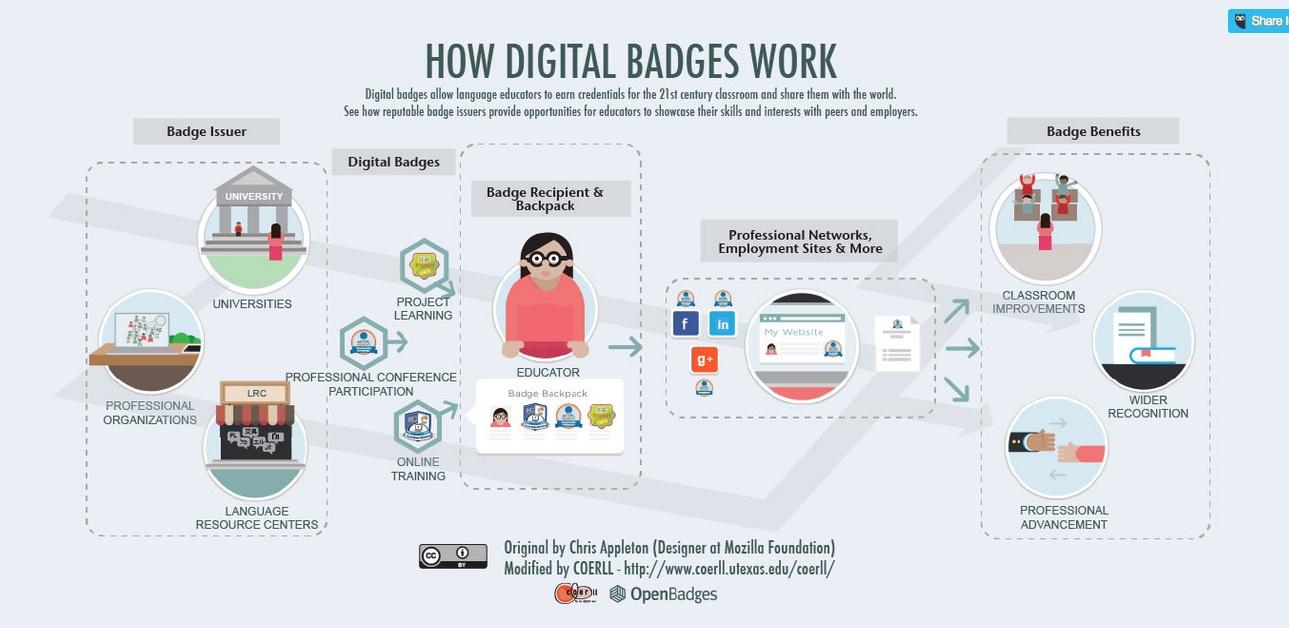Digital Badges: Unlocking Skills and Achievements in the Modern Learning era
In the rapidly evolving world of education and professional progress, digital badges have emerged as a powerful tool for recognizing and validating skills and achievements. As more learners and professionals seek flexible,personalized learning paths,digital badges offer an innovative way to showcase competencies beyond traditional degrees and certificates. In this article, we’ll explore what digital badges are, how they work, their benefits, practical tips for leveraging them, and real-world examples that highlight their transformative impact.
What are Digital Badges?
A digital badge is an online depiction of a skill, achievement, or competency earned by an individual. Unlike paper certificates, digital badges are information-rich, verifiable, and easily shareable across various digital platforms. Each badge contains metadata that details the issuer, criteria for earning the badge, date issued, and more—offering transparency and authenticity.
- Visual Symbol: A digital image, often with an identifiable logo or graphic.
- Metadata: Information about the skills acquired, issuer details, evidence, and date of award.
- Shareability: Can be displayed on LinkedIn,ePortfolios,resumes,and personal websites.
- Verifiability: Can be easily authenticated by employers or educators.
Why Digital Badges Matter in Modern Learning
With the shift towards lifelong learning and skills-based hiring, digital badges are transforming how knowledge and competences are recognized.They help address the needs of today’s dynamic workforce and learners by offering:
- Micro-Credentials: Bite-sized recognition of specific skills or knowledge areas.
- Personalized Learning Paths: Learners can curate unique profiles that reflect diverse abilities.
- Accessible Records: Digital, easily updatable, and readily available for verification.
top Benefits of Digital Badges for Learners and Employers
- Motivation and Engagement: Badges act as milestones, encouraging continuous progress and goal-setting.
- Enhanced Employability: Showcases verified,up-to-date skills to potential employers,increasing job prospects.
- Transparency: Metadata shows exactly what was required to earn a badge—no room for ambiguity.
- Portability: Badges can be displayed across various platforms, including social networks and digital portfolios.
- Cost-effectiveness: Frequently enough more affordable than traditional certification, increasing skill acquisition accessibility.
- Reflection of real-World Skills: recognizes practical, applicable abilities that meet industry demands.
How Digital Badges Work: The Process explained
- Learning or Training: The learner completes a course, workshop, or demonstrates a specific skill.
- Assessment: An official verifies the completion and assesses the learner’s abilities.
- Issuance: The badge is awarded and stored in a digital backpack or portfolio.
- Sharing: The badge holder adds it to their LinkedIn profile,website,resume,or other platforms,enabling easy verification.
Popular digital badging platforms include Credly, Badgr,and Open Badges—each supporting the creation, management, and sharing of these credentials.
Case Studies: Success stories with Digital Badges
IBM’s Digital Badge Program
IBM has awarded over 3 million digital badges to learners worldwide, spanning tech competencies from AI and cybersecurity to cloud computing. The initiative empowers employees and external learners, providing currency in a fast-evolving tech landscape and reinforcing the value of continuous learning.
Mozilla Open Badges in Higher Education
Universities and colleges globally have adopted Mozilla Open Badges to track co-curricular activities, technical skills, and project-based achievements. Students use badges to enhance their digital portfolios, gaining a competitive edge in job applications.
Deloitte’s Badge Program
Deloitte introduced badges to recognize employees’ advanced digital skills,leadership,and innovation. This clear recognition system motivates team members to upskill and aligns workforce capabilities with organizational goals.
Practical Tips: Maximizing the Value of Digital Badges
- Choose Recognized Platforms: Select badges from reputable issuers for greater employer trust.
- Curate Thoughtfully: Display a portfolio that aligns with your career or academic goals.
- promote Your Badges: Share badges on LinkedIn, Twitter, your CV, email signatures, or your personal website.
- Maintain Evidence: Connect badges to project portfolios, code repositories, or endorsements to strengthen credibility.
- Stay Updated: Pursue additional badges to keep skills current and respond to evolving industry trends.
The Future of Digital Badges in Learning and Professional Development
As industries pivot towards competency-based hiring and micro-credentialing, digital badges are set to play an even bigger role in the educational ecosystem. Here’s what the future might hold:
- Greater Standardization: Efforts are underway to ensure consistency in badge quality and recognition across sectors.
- Integration in Recruitment: More employers are using badges as trusted skills filters during recruitment processes.
- Lifelong Learning Journeys: Learners will create extensive digital identities,updated throughout their careers.
- Cross-platform Portfolios: Technological advances will enable seamless sharing of credentials across educational and employment platforms.
Common Questions About Digital Badges
Are digital badges as valuable as traditional certificates or degrees?
Digital badges serve as complementary credentials. They offer real-time proof of specific skills and are especially valuable in fields where technology, tools, or skills change rapidly.
Can I earn digital badges for soft skills?
Yes! Many badges acknowledge competencies such as leadership, communication, teamwork, and problem-solving, in addition to hard technical skills.
How do employers view digital badges?
Employers increasingly embrace digital badges,especially in tech,business,and creative industries,as they offer a transparent,easy-to-verify record of abilities and continuous learning.
Conclusion: Embrace the Power of Digital Badges
As learning becomes increasingly flexible and skills-focused, digital badges are revolutionizing how we track and share professional and educational achievements.They empower learners, motivate achievement, and help employers pinpoint talent with specific, verified capabilities.Whether you’re a student, educator, or employer, integrating digital badges into your development path can unlock new opportunities, foster ongoing growth, and better prepare us for the demands of the modern digital era.
Ready to elevate your skills? Start exploring digital badges today and take charge of your learning journey in the modern era!

